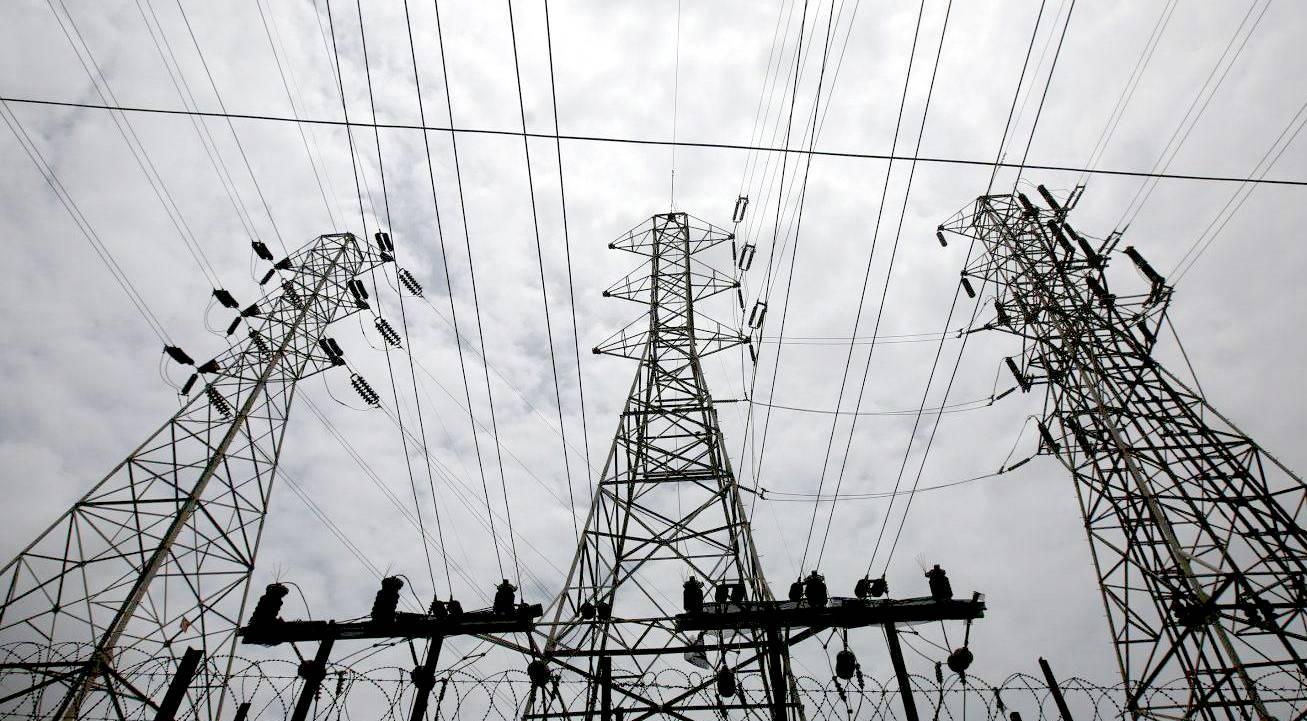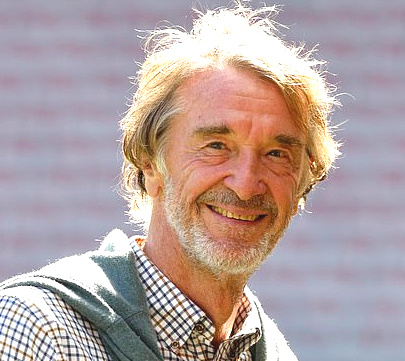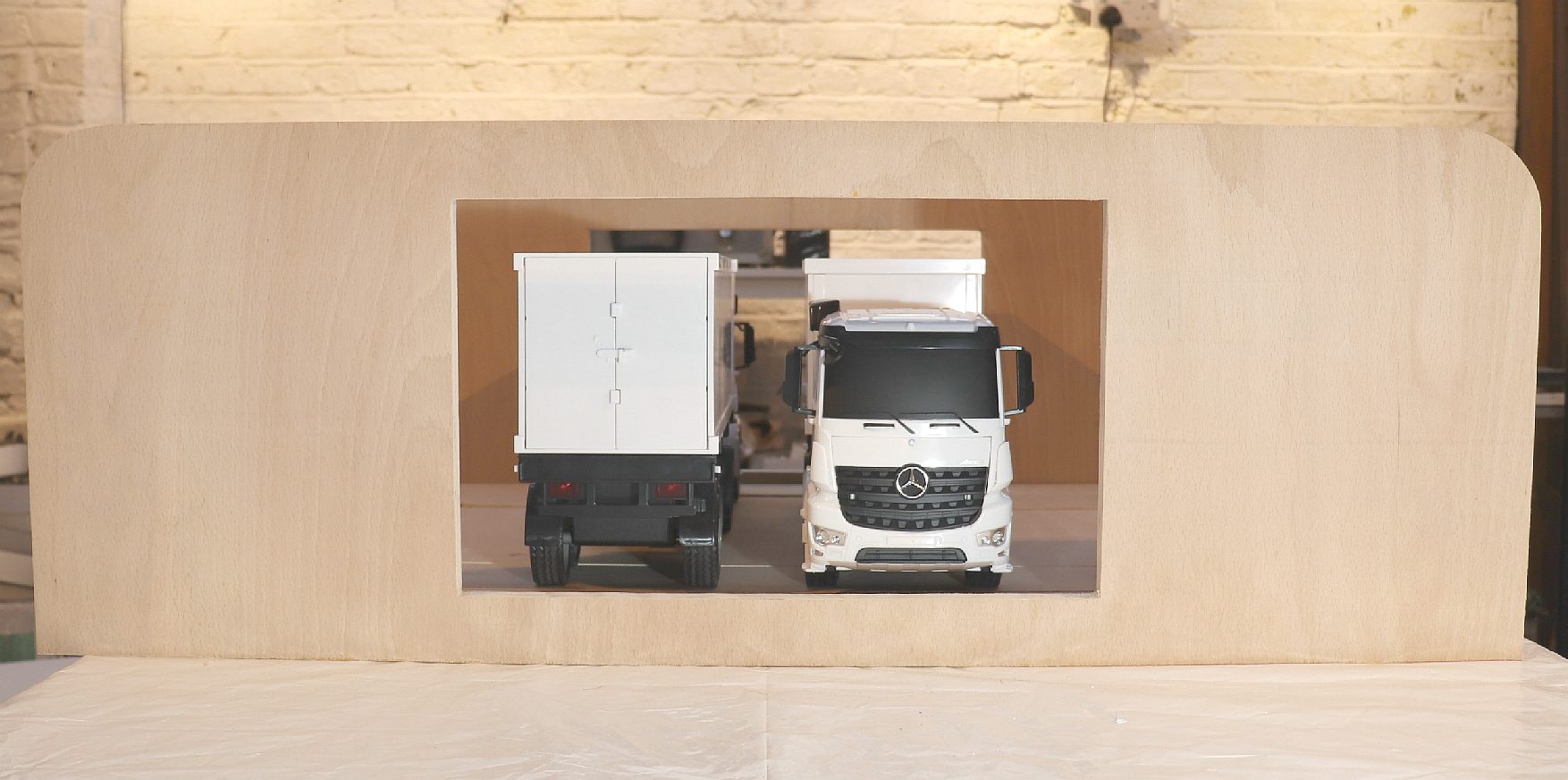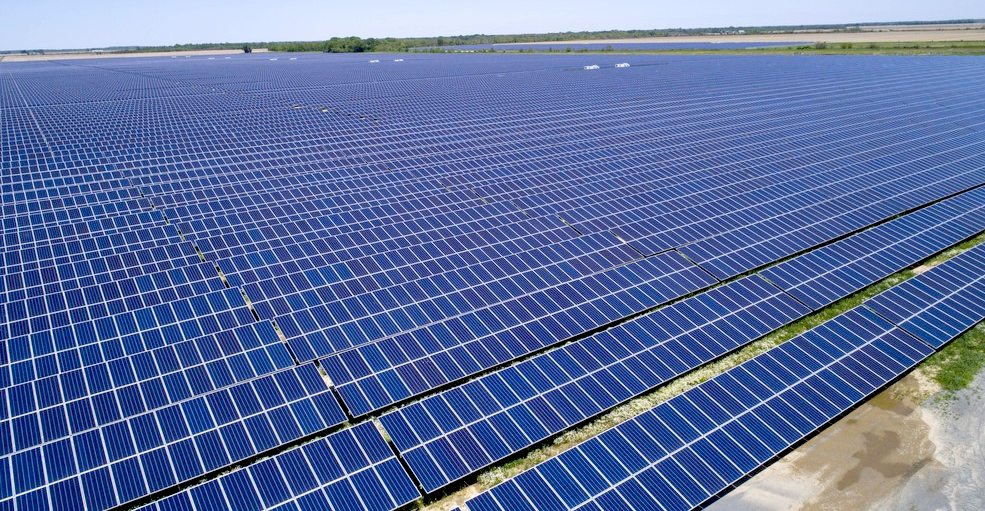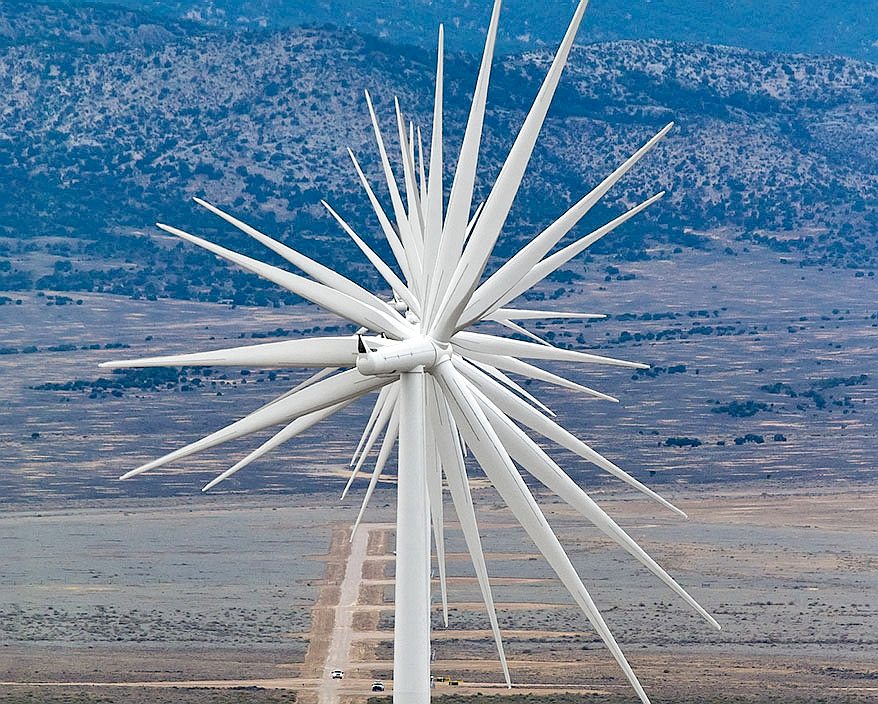|
Please use our A-Z INDEX to navigate this site where page links may lead to other sites, or see HOME
|
|
HIGH VOLTAGE - Every country uses high voltage cables to transmit electricity via a grid, mostly over ground using steel pylons, but also underground and undersea. The higher the voltage, the lower the transmission losses. The length of cables and transformer efficiency, also play a part in designing an efficient system.
Electricity is the most convenient way of transmitting clean, alternative energy, from the point of origin (conversion from natural harvesting) to the end user.
Fortunately for humans, electricity is linked to magnetism, a force that can be harnessed to attract or repel, and convert a generated or stored potential difference (such as in batteries) from electrons traveling in a metal conductor, to rotational or linear movement.
This incredible property gives us electric motors and generators. We take it for granted, but it is a miracle of nature. We are living in the age of electricity.
MOTORS
Electric motors are perhaps most important to modern society for transportation and mobility security. Up to now we have been reliant on steam and internal combustion engines (ICE) for our deliveries and trips to school and the supermarkets and for ships that transport goods from one country to another.
ICE engines convert petrol and diesel fuels into rotational movement via pistons and crankshafts using controlled detonations, that burn with compressed air to release carcinogenic exhaust fumes that also contain particulates. They are engineering marvels without any doubt, but they are also dangerous to life on earth where they cause global warming and lung cancer.
TOO SLOW BOJO, UK POLITICS, ALL TALK - Boris Johnson's Government have been a little slow to introduce policies and tax breaks to gird the loins of the energy industry to change from coal, oil and gas, to green hydrogen from wind turbines and solar farms. His inability to read world change and act decisively to create a sustainable society, has just about halved pensioner's savings in real terms in the UK. Well done Bojo.
Petrochemicals tycoon Sir Jim Ratcliffe, the wealthiest man in the UK, and who was recently accused of “environmental vandalism” after being linked to almost a third of industrial air pollution in Scotland, has warned against burning fossil fuels and is now calling on the UK government to invest more money in hydrogen technology.
INSOLATION
With the amount of incoming solar radiation (insolation) that hits the world in one hour there is enough energy to power the world for one year. With the addition of solar panels all around the world reduces pressure and the need to produce more oil. Indeed, we would not need oil at all. Yeh baby!
The price of photovoltaic panels has been reducing as demand improved production methods and the efficiency is climbing, making them an attractive proposition for off-grid supplies for home use and for solar farms where electricity is produced commercially.
Evacuated tubes and other solar heat collectors and concentrators can provide significant quantities of heat for homes and factories.
LONG TERM SECURITY
We might also enter into international agreements to undermine fossil fuel energy trading monopolies and assure that everyone has the right to cheap and clean renewable energy, as per United Nations SDG 7.
MODEL 1:20 - April 6 2020, a model of a SmartNet service station is under construction, shown here with two Mercedes articulated container trucks inside. We are using plywood for the building and some of the working parts - that cannot be shown due to patent law prohibiting prior publication. The Automated & Electric Vehicle Act 2018, makes it law in England that provision must be made for charging and refuelling of electric vehicles at service stops. This system would more accurately be described as a refuelling point - since the energy exchanges for trucks and cars are virtually instant. The building can be a quarter this size for city locations where space is limited. But for load levelling purposes, the larger the capacity of stored electricity, the more efficient the grid. Copyright photograph © 6 April 2020, Cleaner Ocean Foundation. Not for profit organizations cannot afford to progress such developments because of the high cost of patents.
ENERGY DISTRIBUTION, GENERATION & STORAGE
If properly planned and operated, dispersed storage and generation may provide benefits to distribution systems by reducing capacity requirements, improving reliability, and reducing losses. Dispersed-storage-and-generation technologies include hydroelectric systems, diesel generators, wind-electric systems, solar-electric systems, batteries, storage space and water heaters, storage air conditioners, hydroelectric pumped storage, photovoltaics, and fuel cells.
As a result of the application of deregulation in the electric power sector, a new identity appeared in the electric power system map known as “Distributed Generation” (DG). Instead of using 100 MW to GW sized units located far from the loads, disbursed generation sites might be kW to MW scale - located closer to natural resources and local loads.
Distribution networks were initially designed as passive systems, which provided one-directional links between the transmission network and electricity end users. The introduction of DG is resulting in many distribution networks becoming energy harvesting systems, with much more variability and bidirectional power flows where there are high penetrations of DG.
FROM SPACE EXPLORATION TO ZERO EMISSIONS - Developed to power satellites and spacecraft, the silicon solar panel is now a cost effective way of generating clean electricity. Ideal sites for the location of solar farms is land that cannot be used for farming, such as the deserts we have created.
Those who hold the power and wealth should consider re-investing in alternatives as they head towards the sustainable economics of zero growth.
The deployment of renewable energy technologies increases the diversity of electricity sources and contributes to the flexibility of an international infrastructure system and its resistance to central shocks, especially where off-grid installations are widely deployed, but can be grid connected.
It is likely to be that at some point in the future we will no longer need power stations that run on coal, oil or nuclear fuels. We will have dragged ourselves out of the fossil fuel cesspit and taken power generation from the fortunate few who profit from geological deposits, to the masses who only need a space to mount the harvesting medium for energy independence.
For those countries
whose reliance on imported
gas is a significant
energy security issue, renewable technologies can provide
a level playing field.
According to Power-Technology.com, a website that provides market and customer insights in this sector, they listed these power companies (according to the 2018 Forbes calculation of net market capitalization, assets, sales and profit) as the biggest utilities:
KEPCO Korean Electric Power Corporation National Electric Grid & Central Electricity Authority (India) National Energy Board (Canada) National
Grid plc (formerly Central Electricity Generating Board UK) State Grid Corporation of China TEPCO Tokyo Electric Power Company
FUSION | BIOFUELS | GEOTHERMAL | HYDRO-ELECTRIC | SOLAR | WAVE & TIDAL | WIND
LINKS & REFERENCE
https://www.kinectrics.com/Solutions/Pages/Distributed-Generation-Services-.aspx https://www.dg.history.vt.edu/ch1/introduction.html https://www.sciencedirect.com/topics/engineering/electric-power-distribution
ENERGY CRISIS - Some countries act as though there is no energy crisis where they have an abundance of fossil fuel reserves, but they will be unable to milk the remainder of the world with the allure of cheap fossil fuels and energy independence for renewables becomes the norm. We must help those blinded by kleptocratic policies to stop killing species and warming the planet.
Please use our A-Z INDEX to navigate this site
|
|
|
This website is provided on a free basis as a public information service. copyright © Climate Change Trust 2024. Solar Studios, BN271RF, United Kingdom.
|
